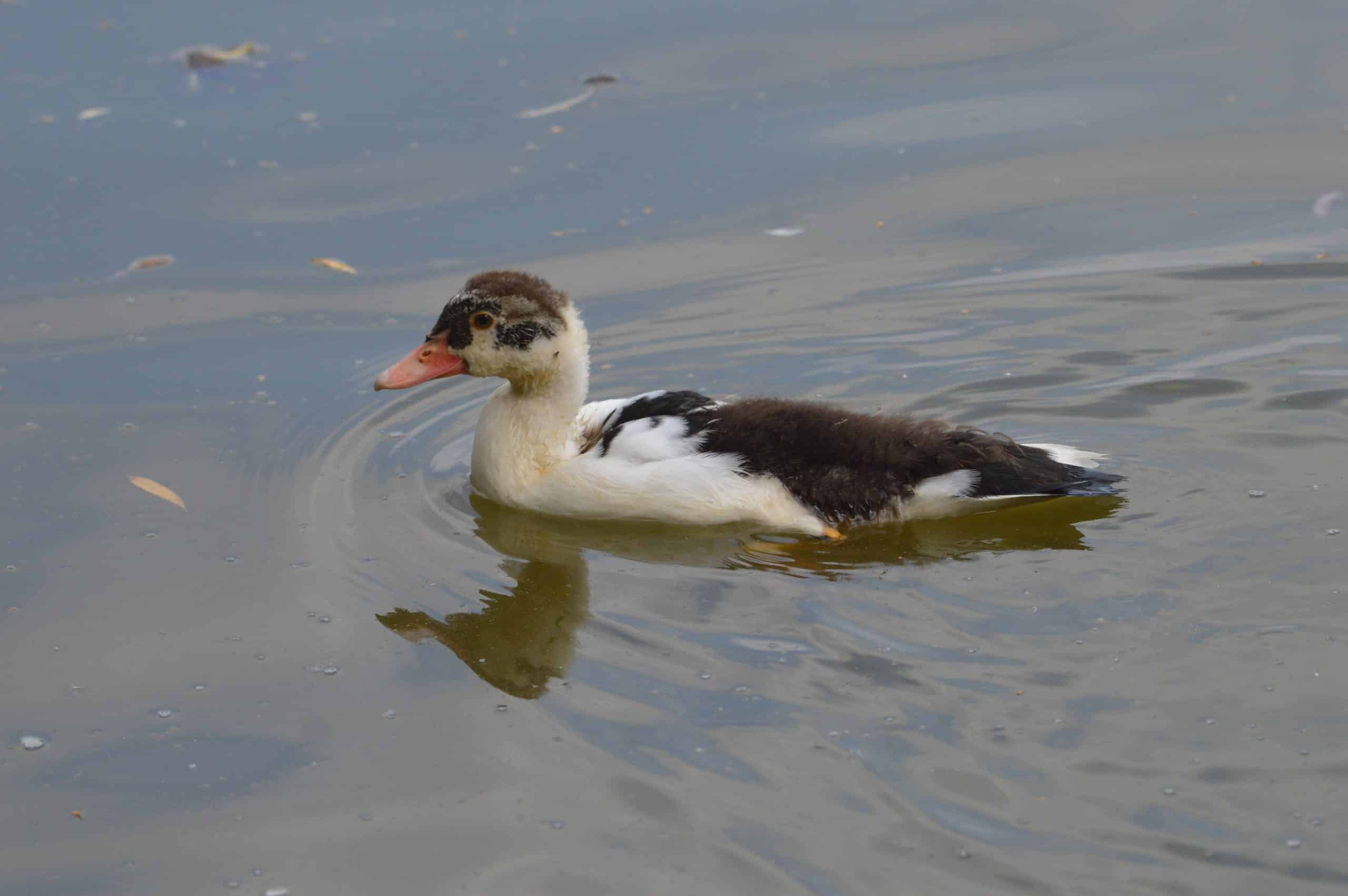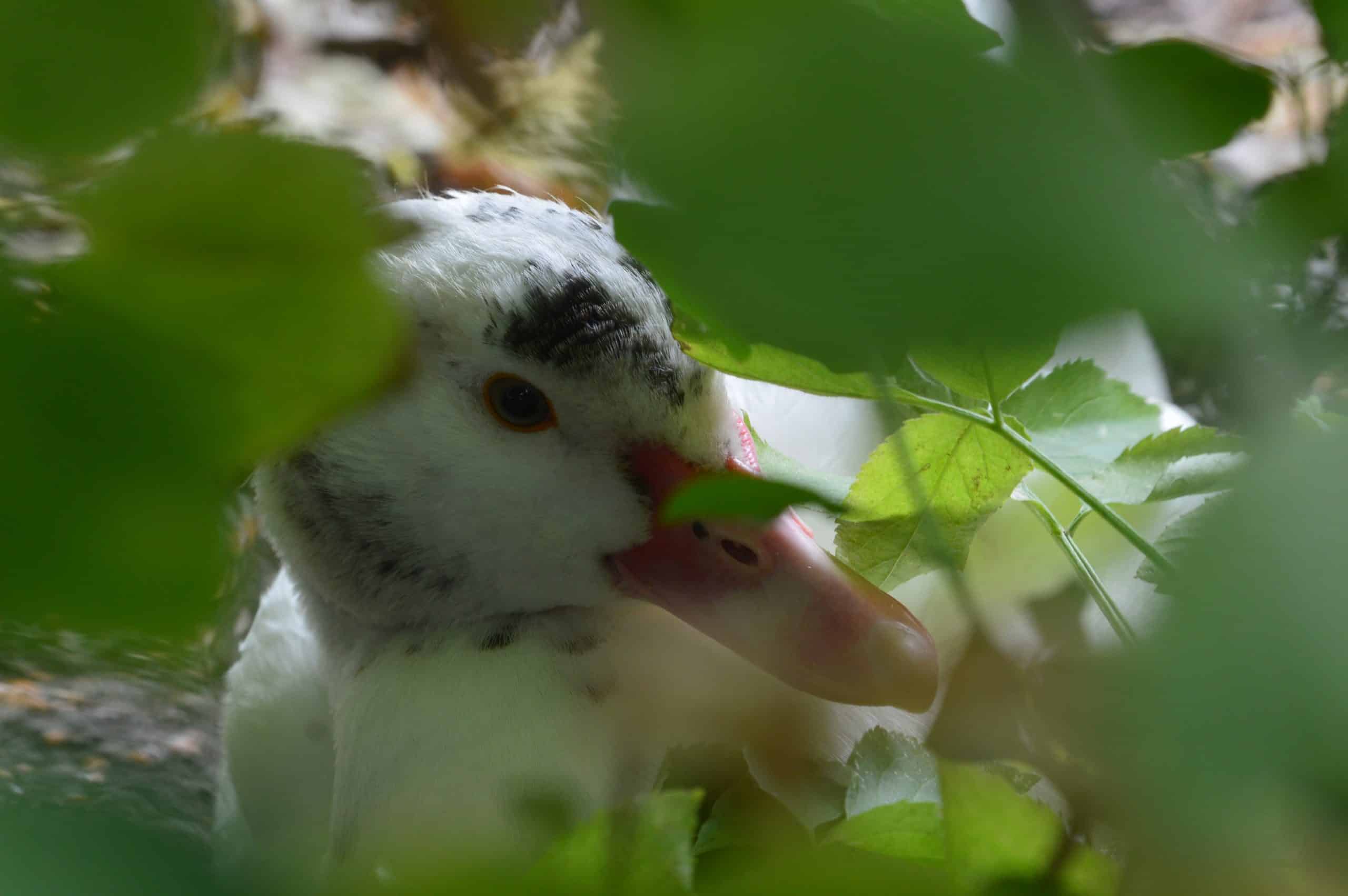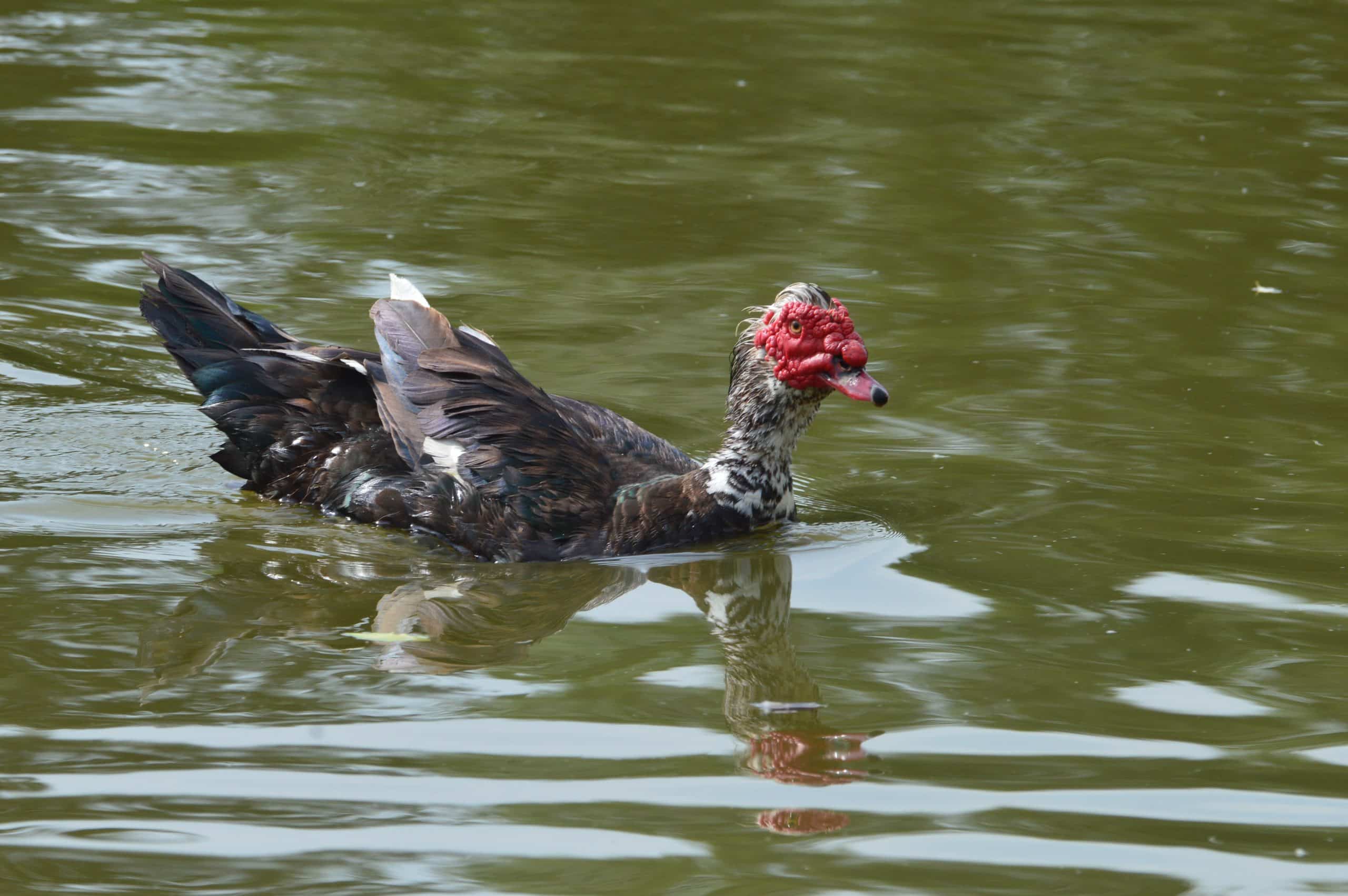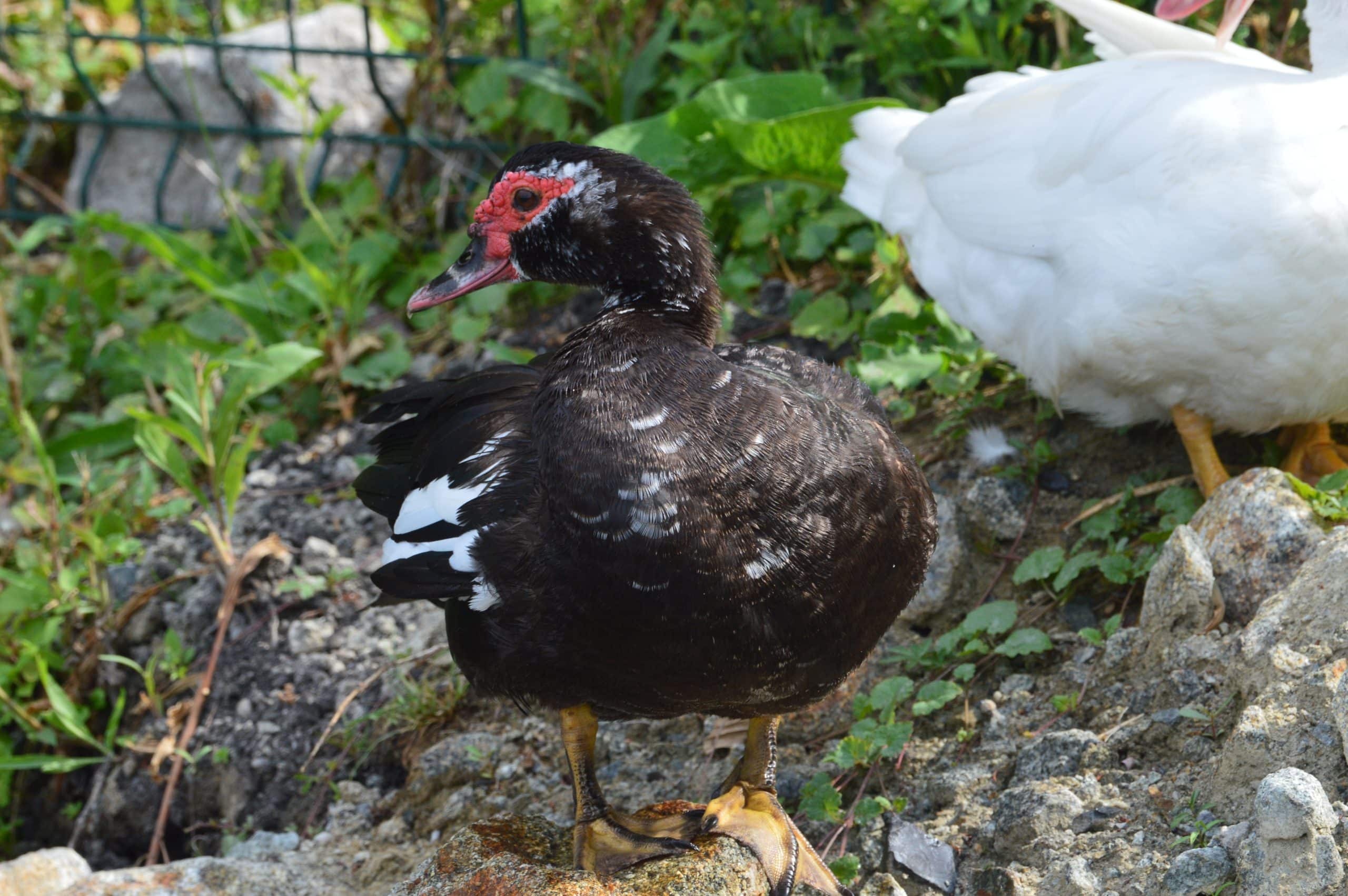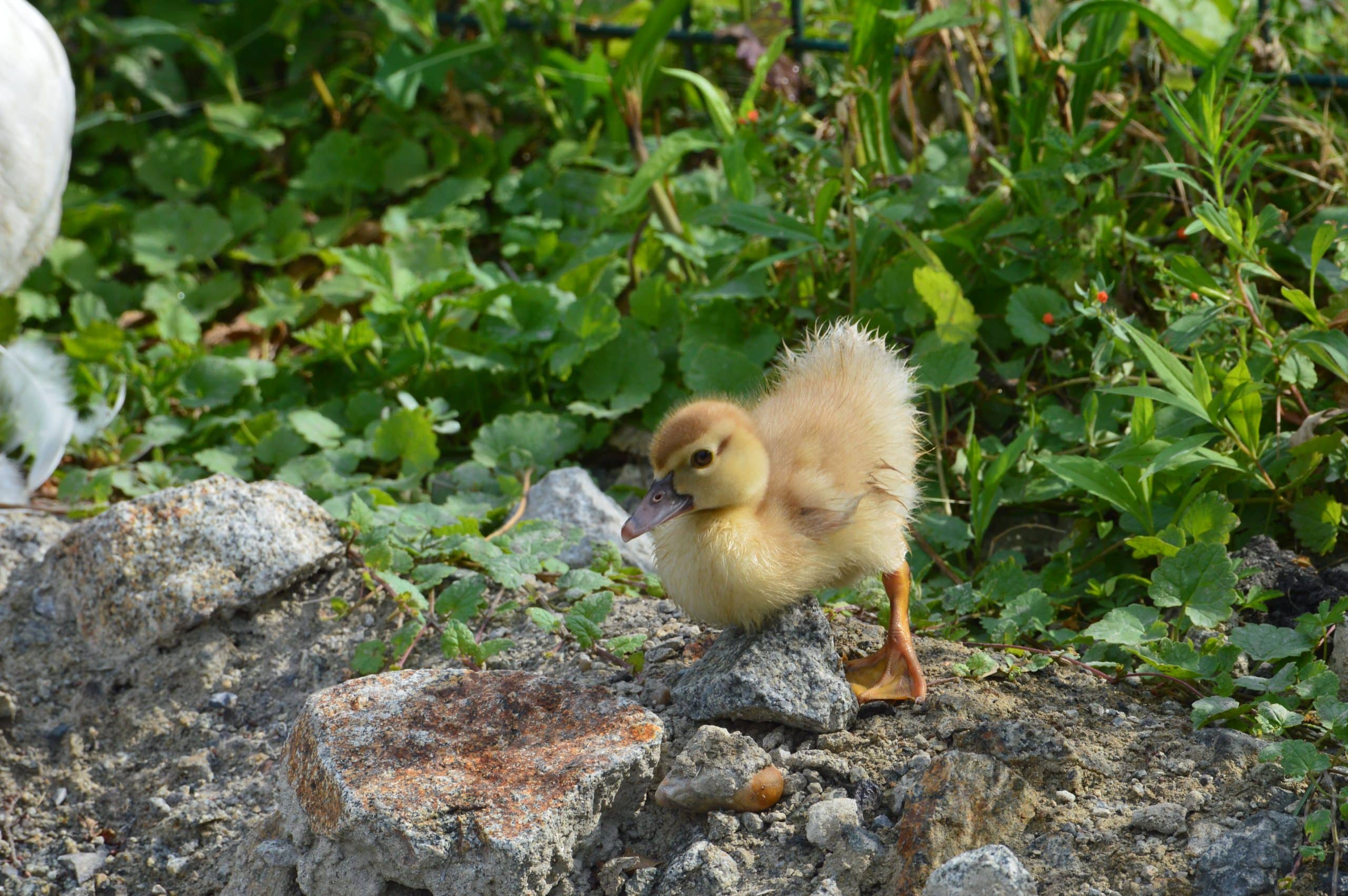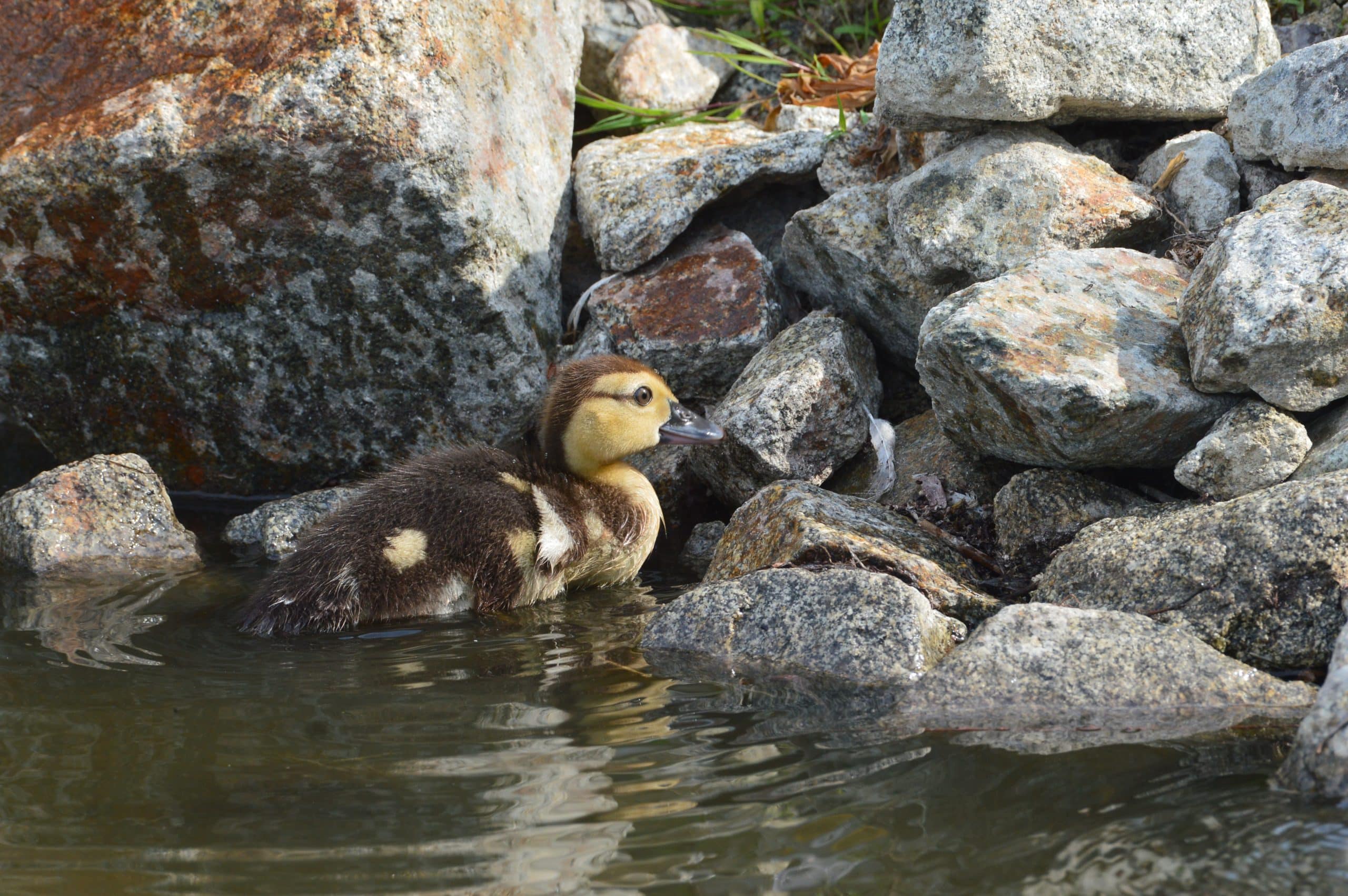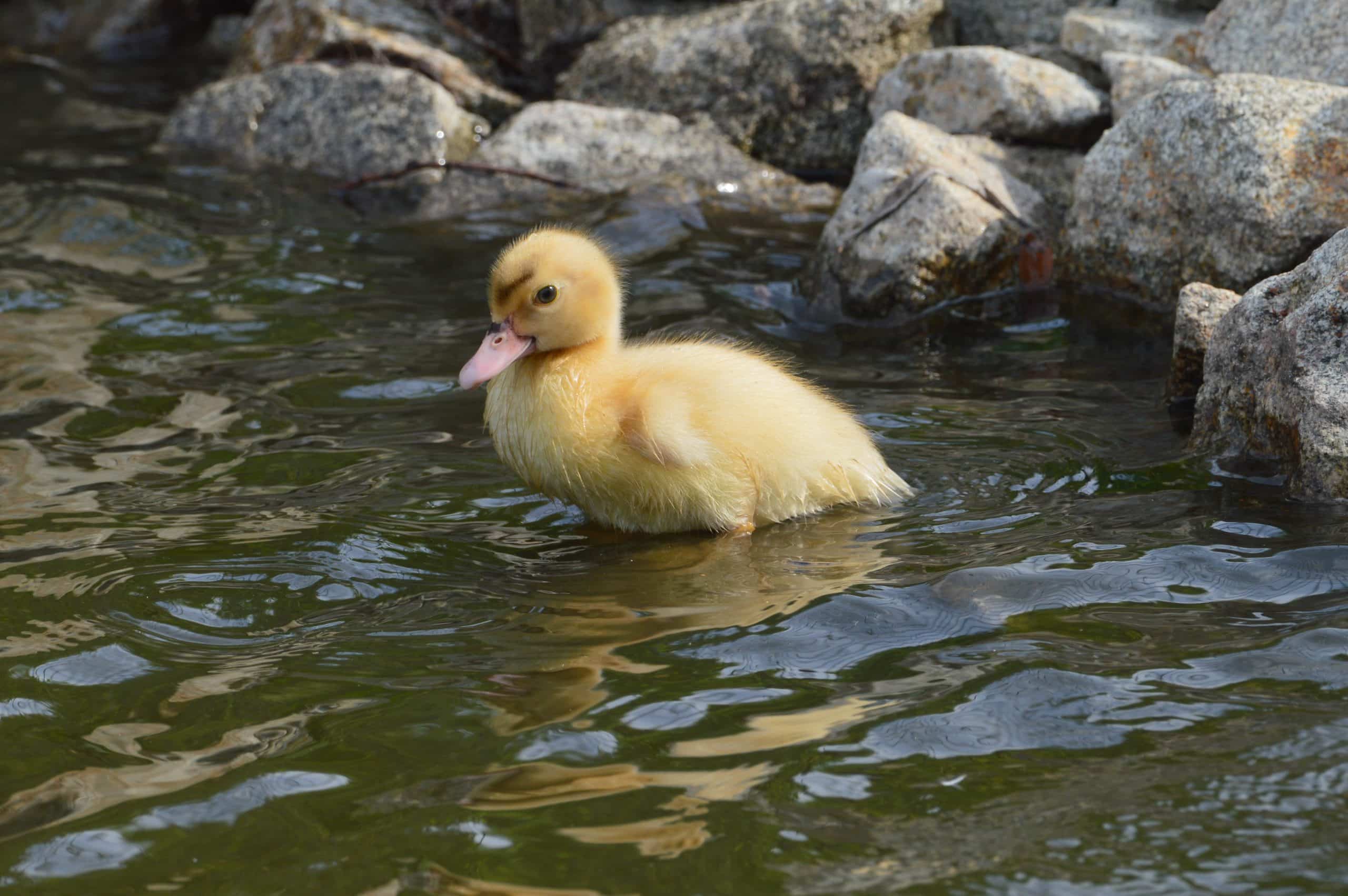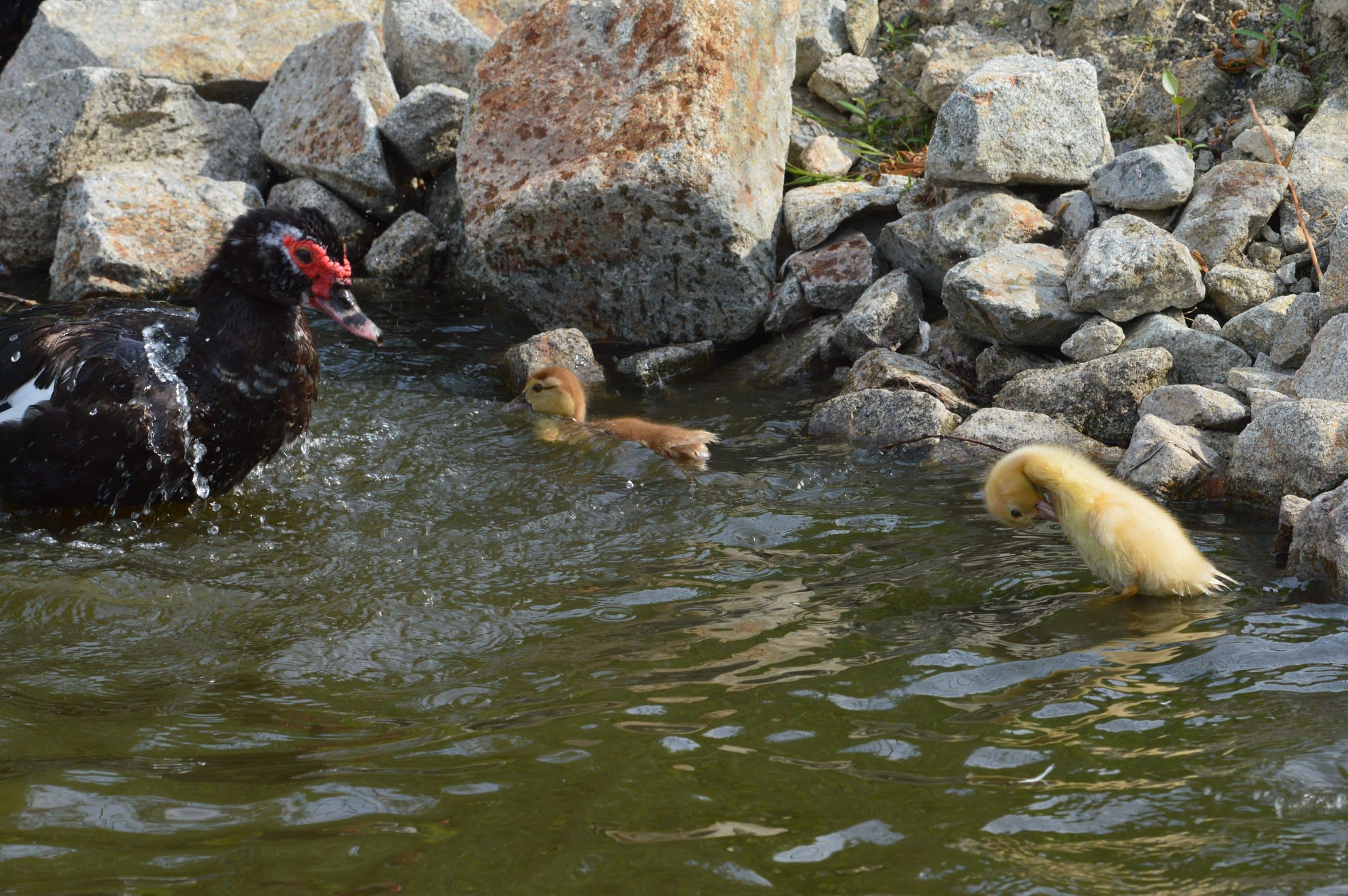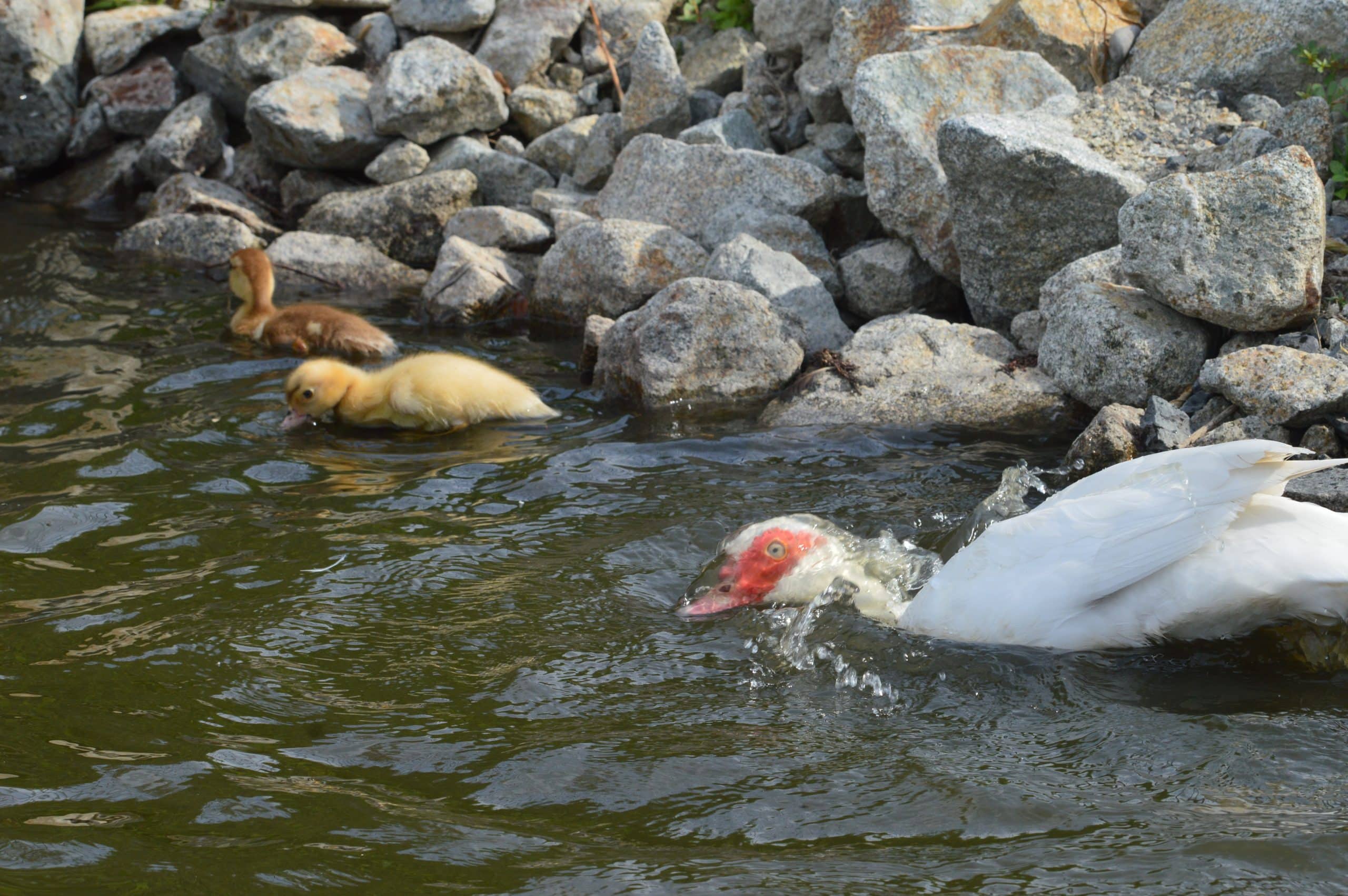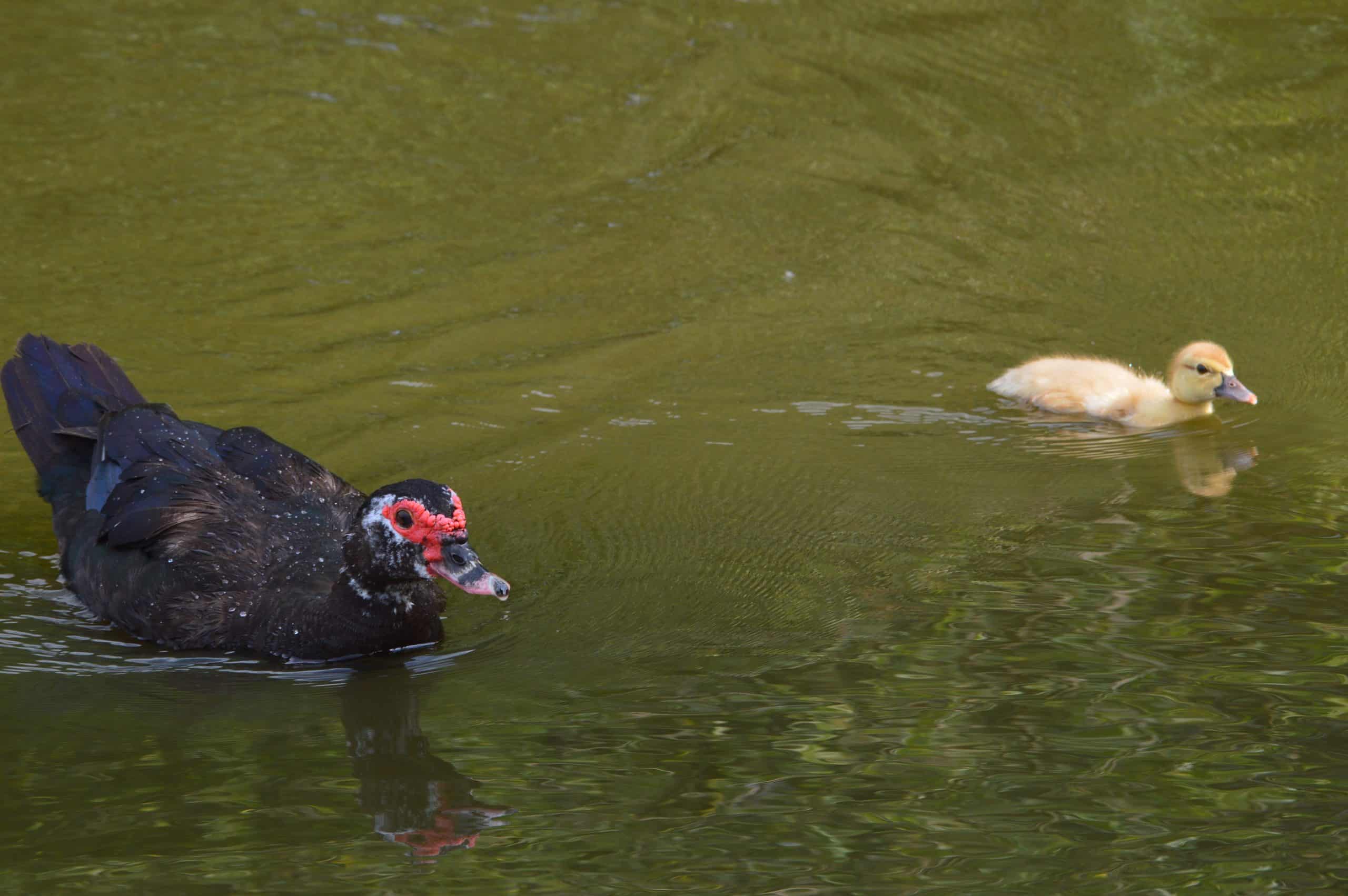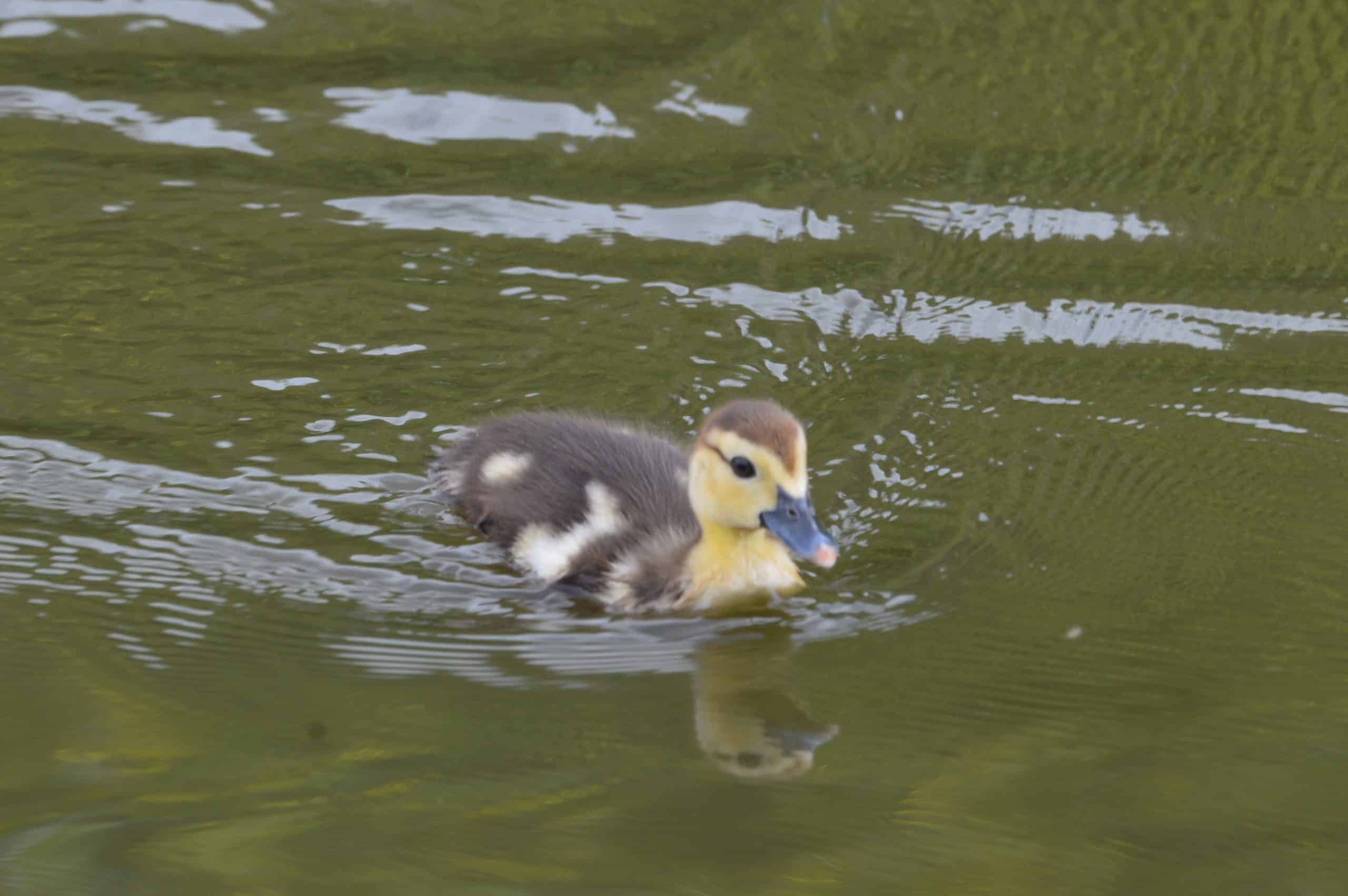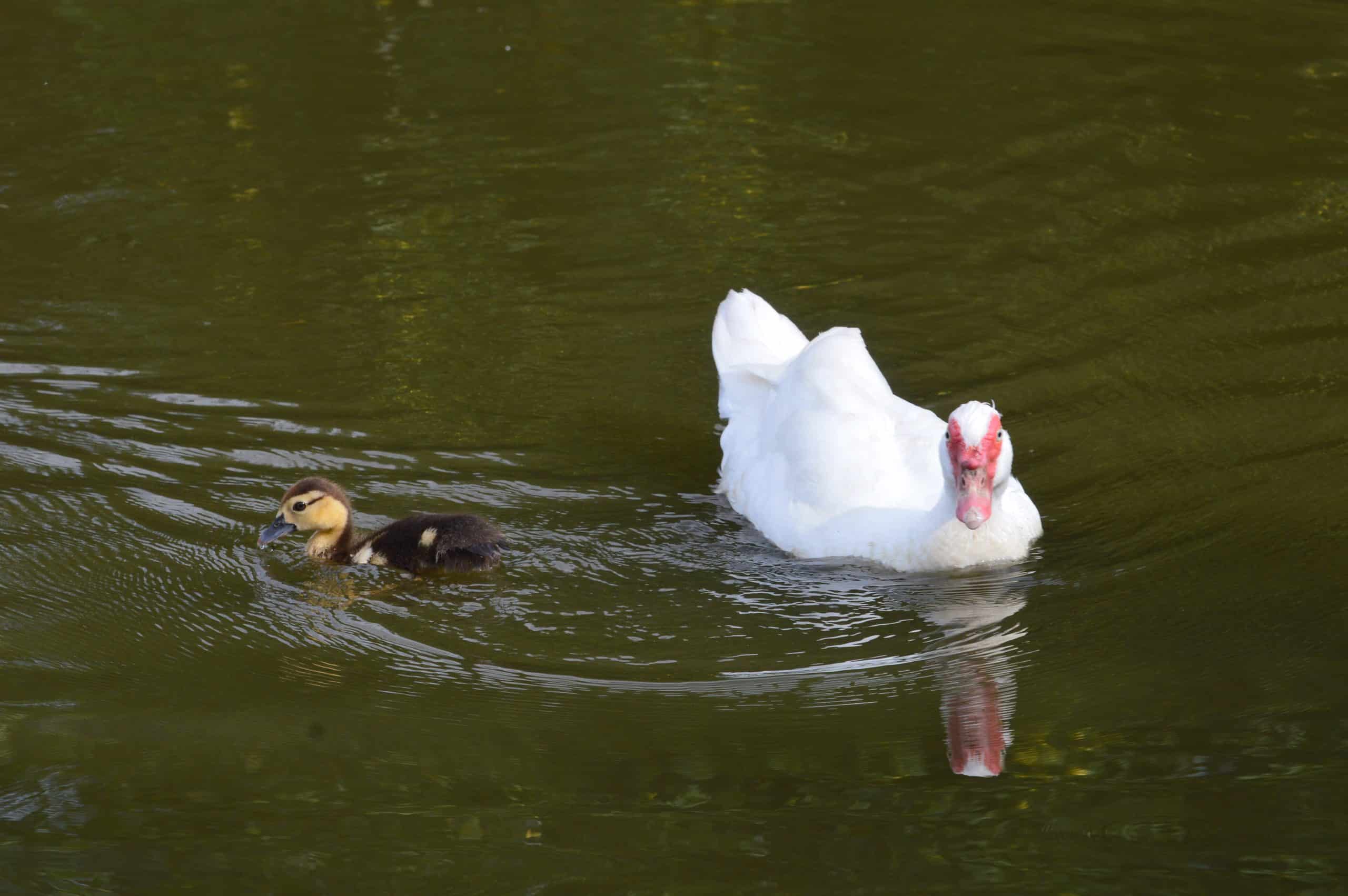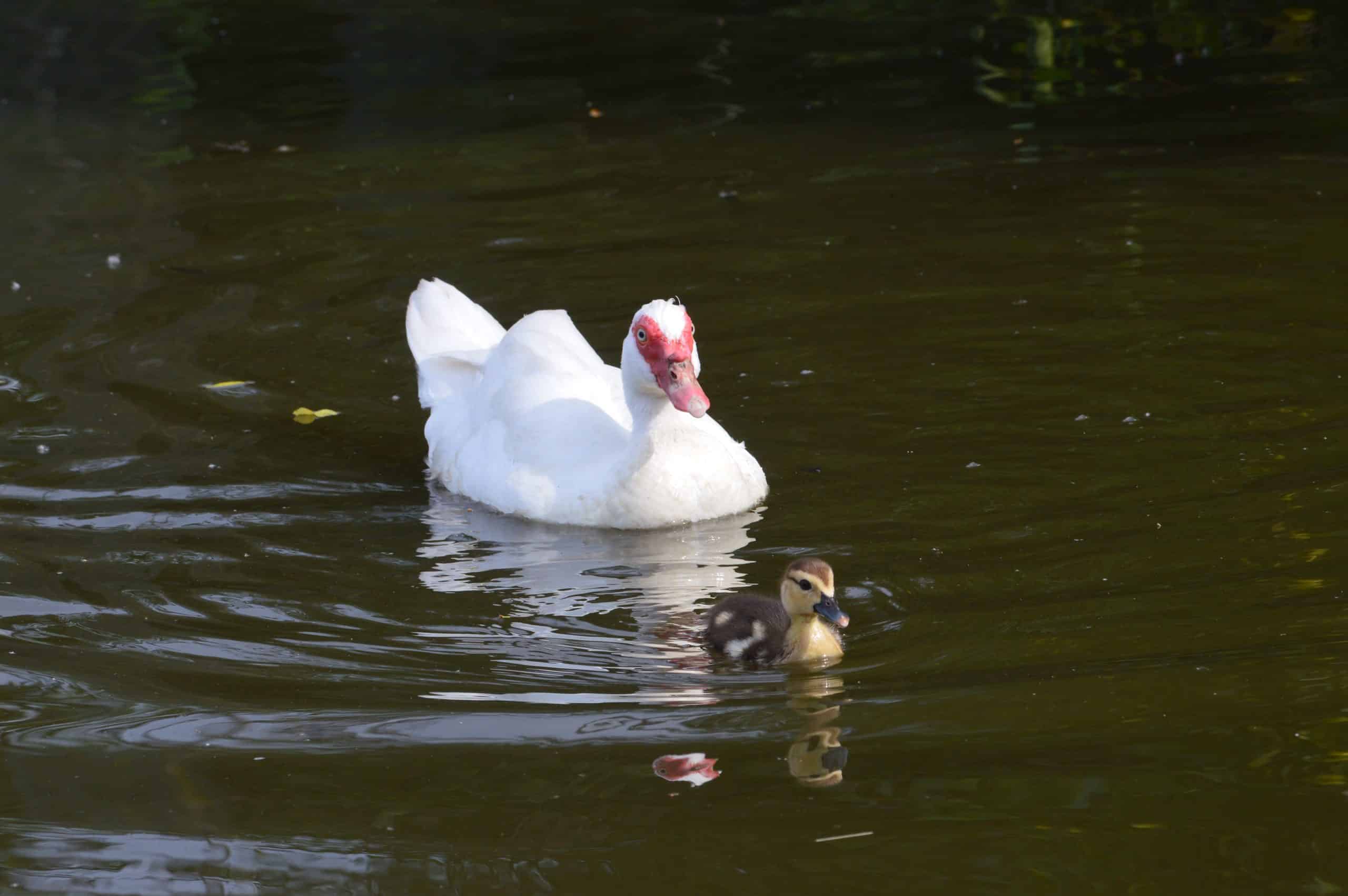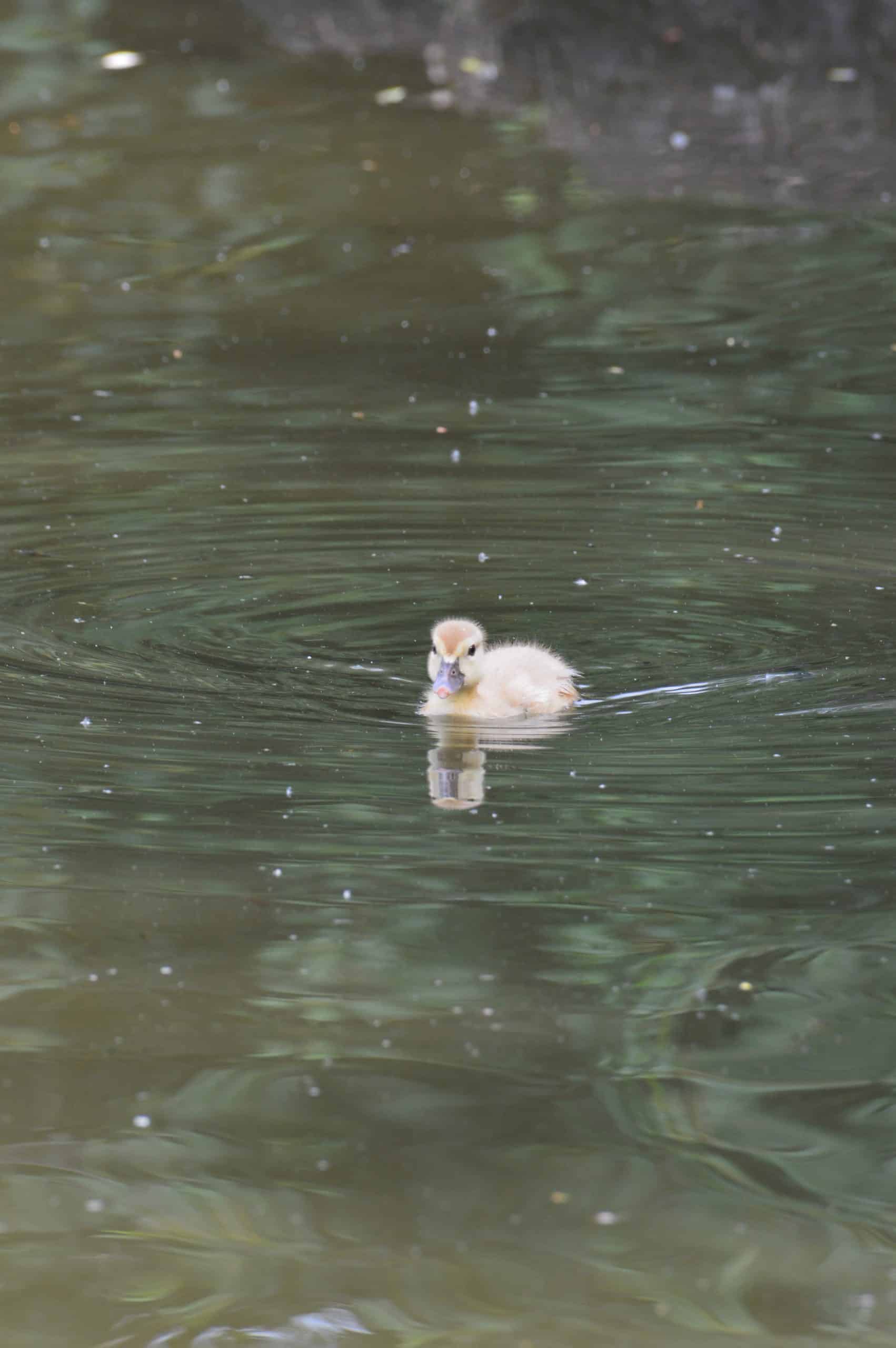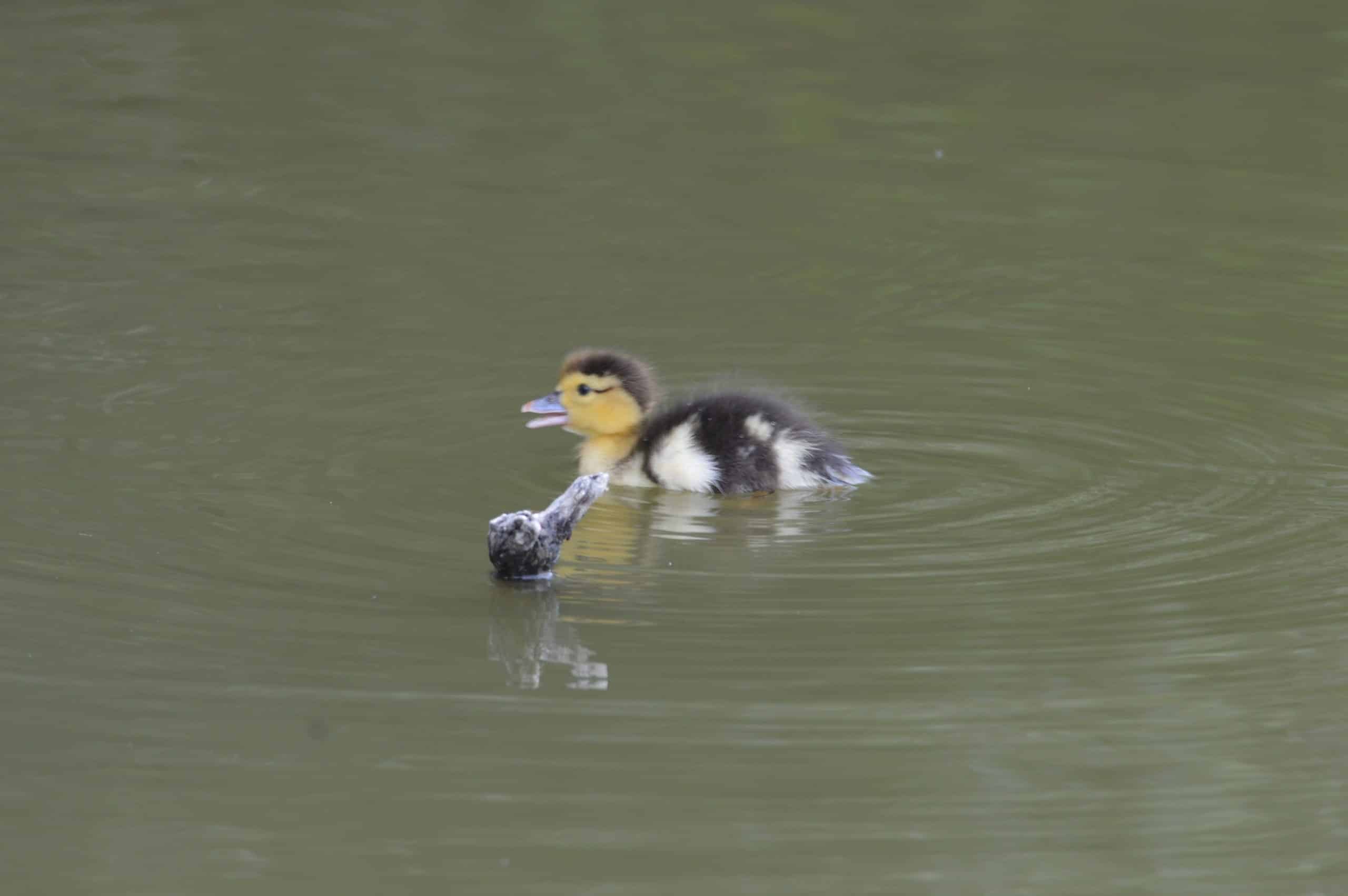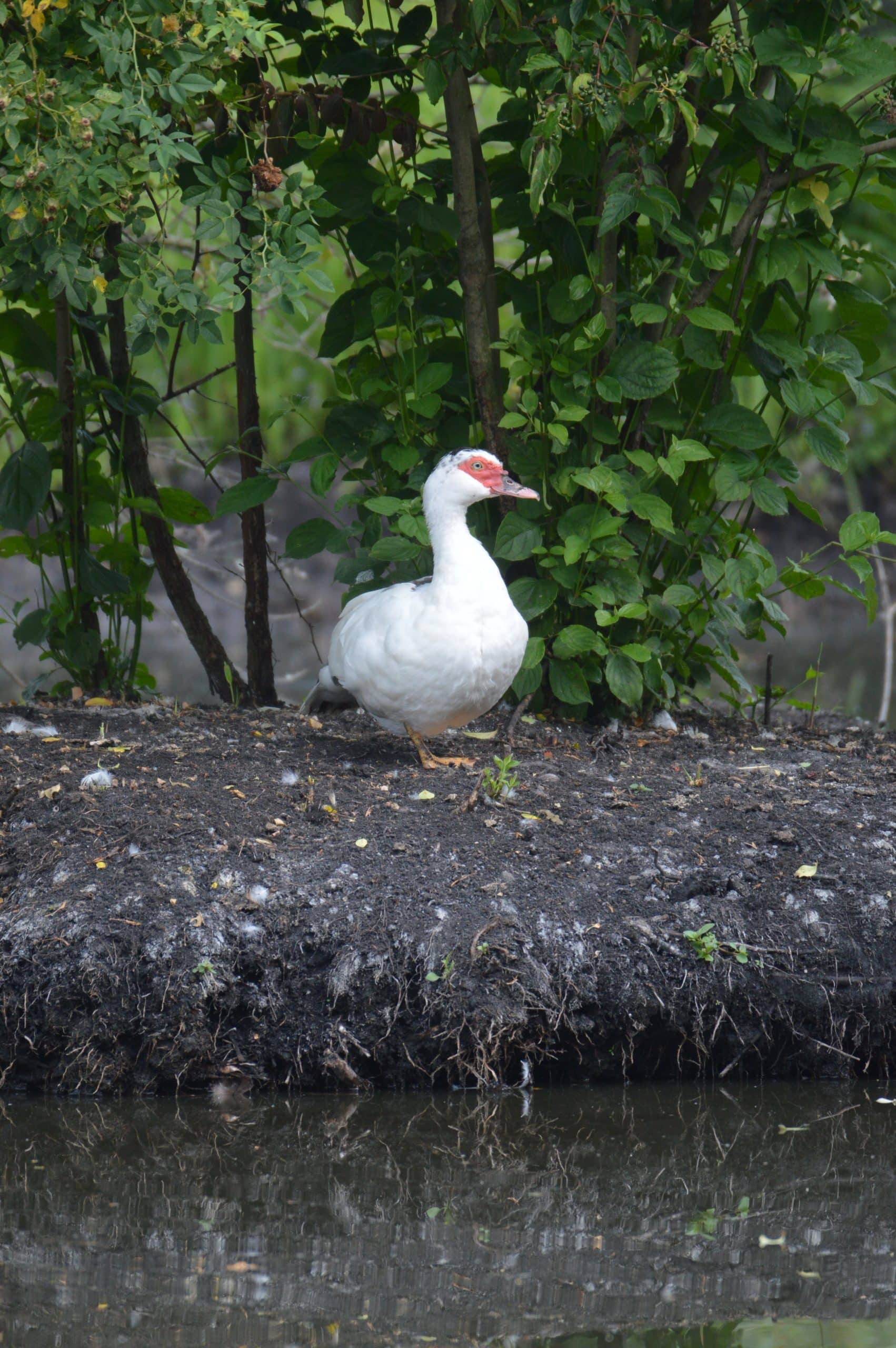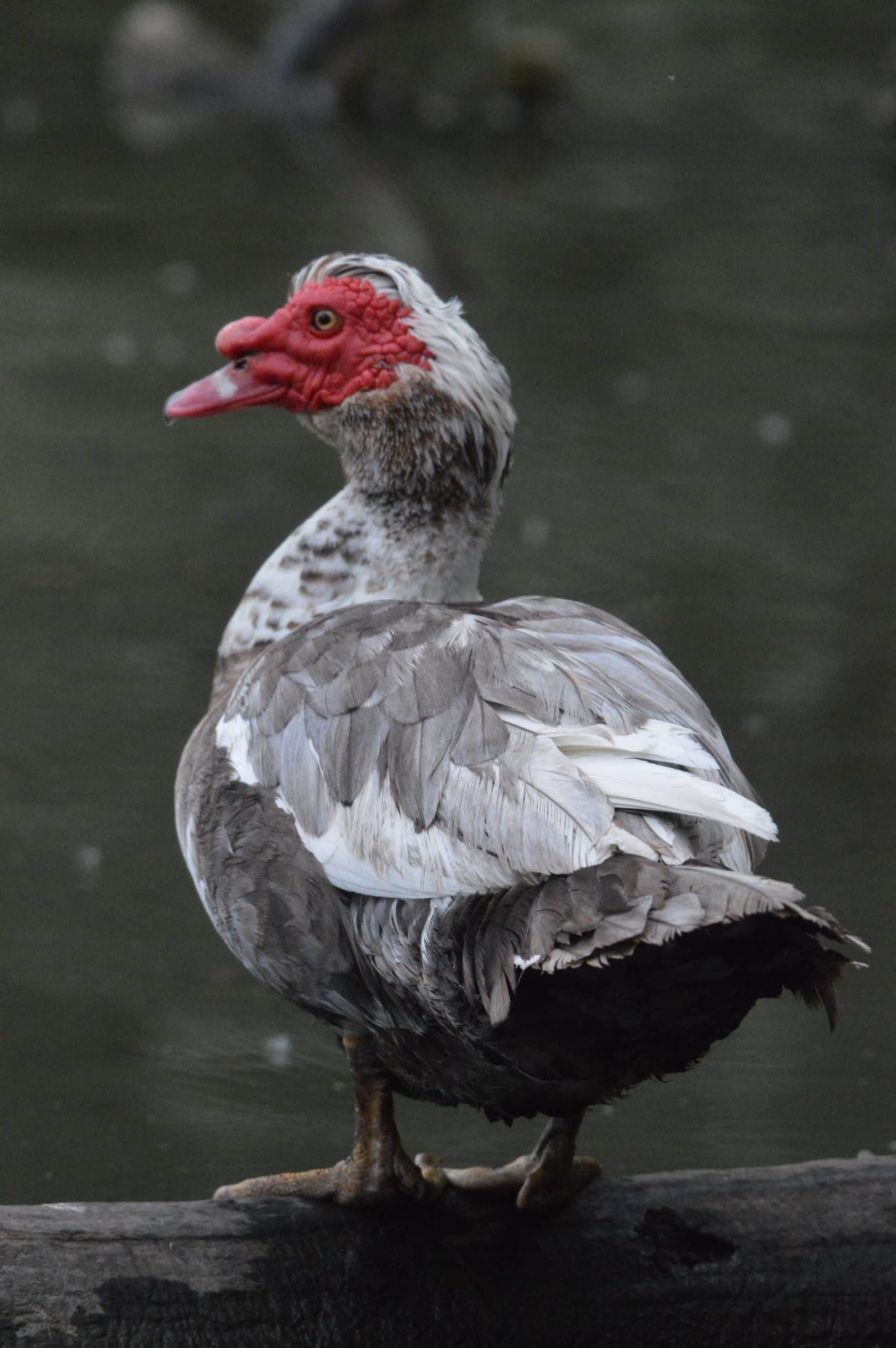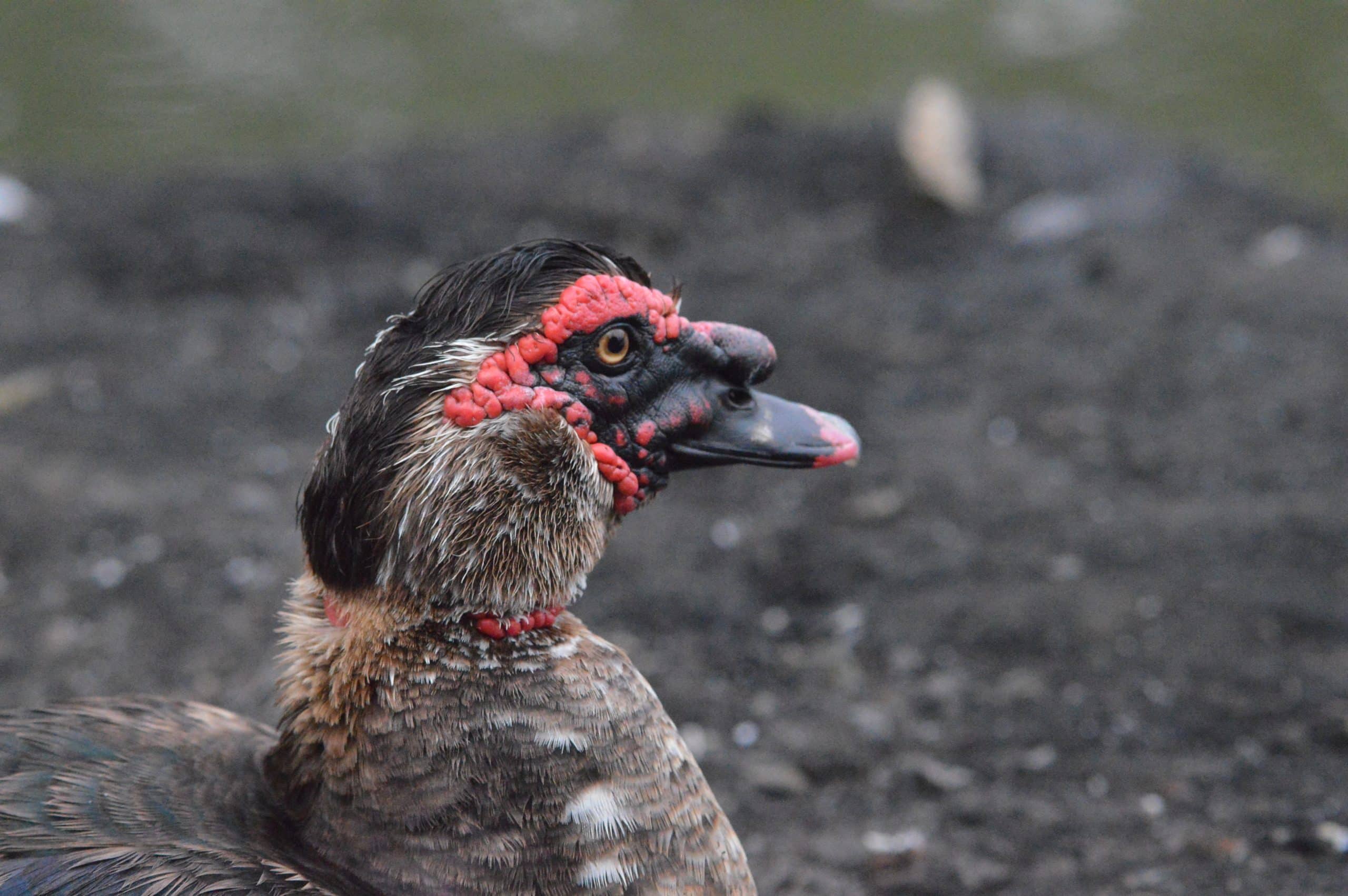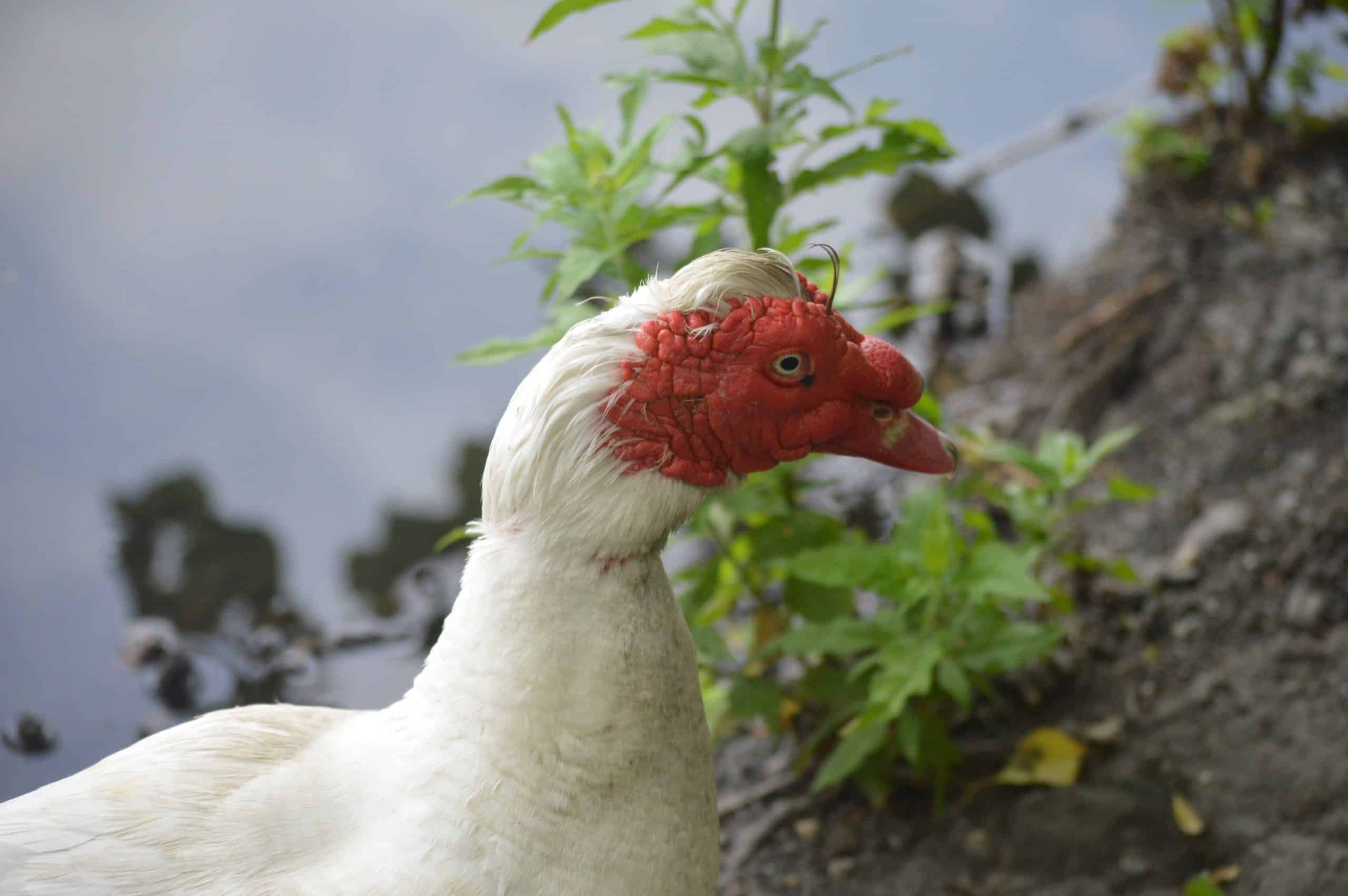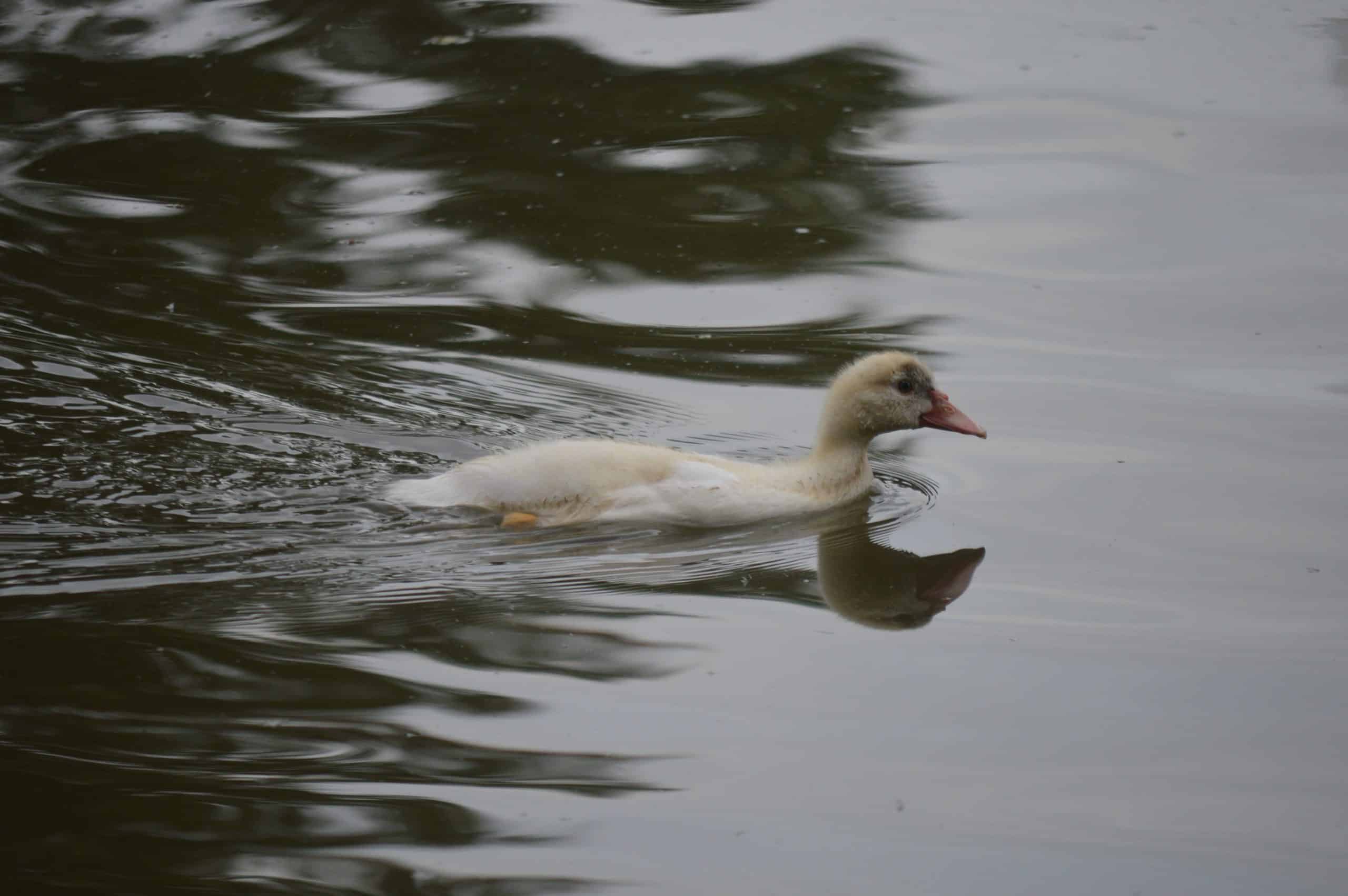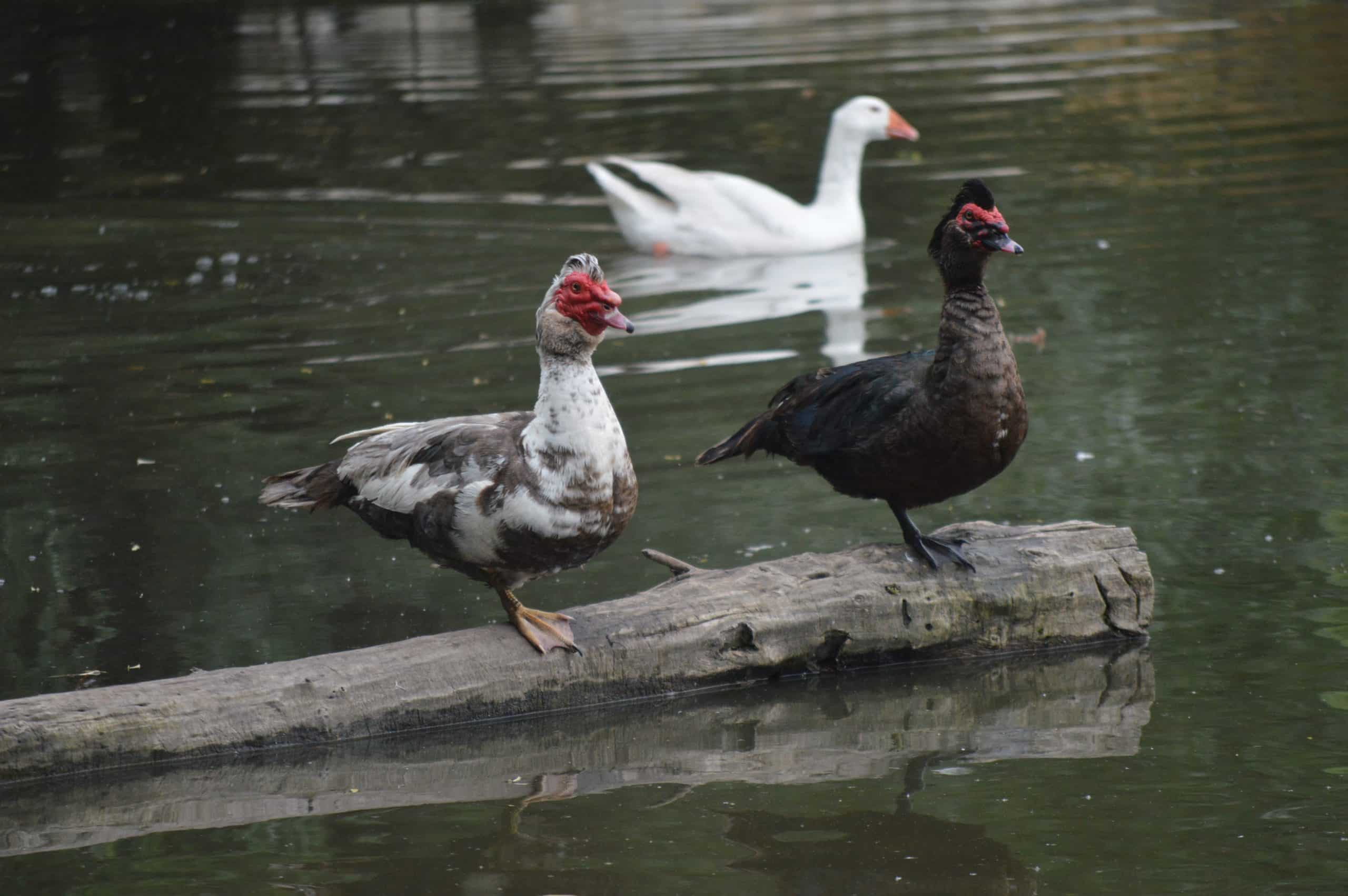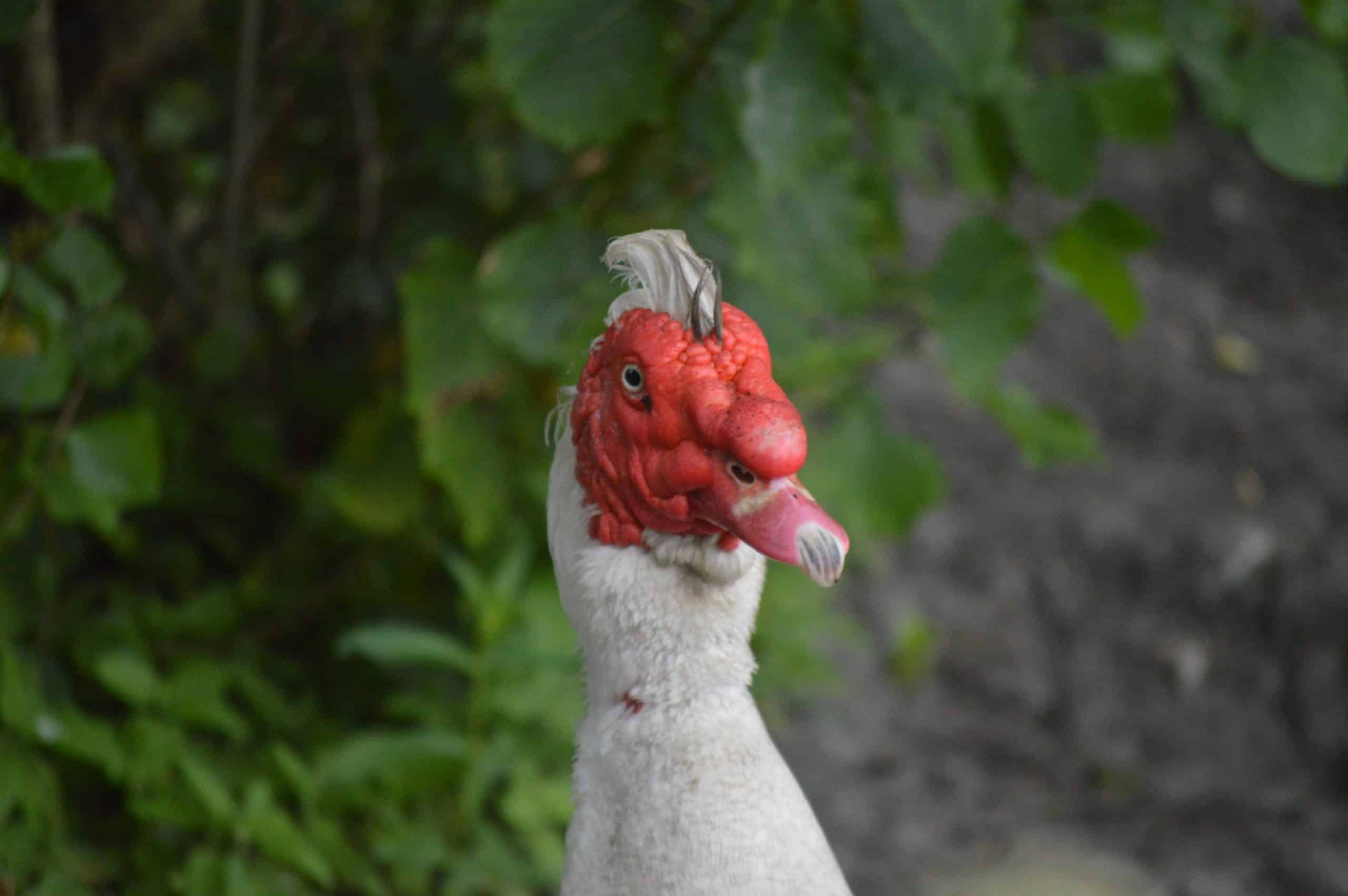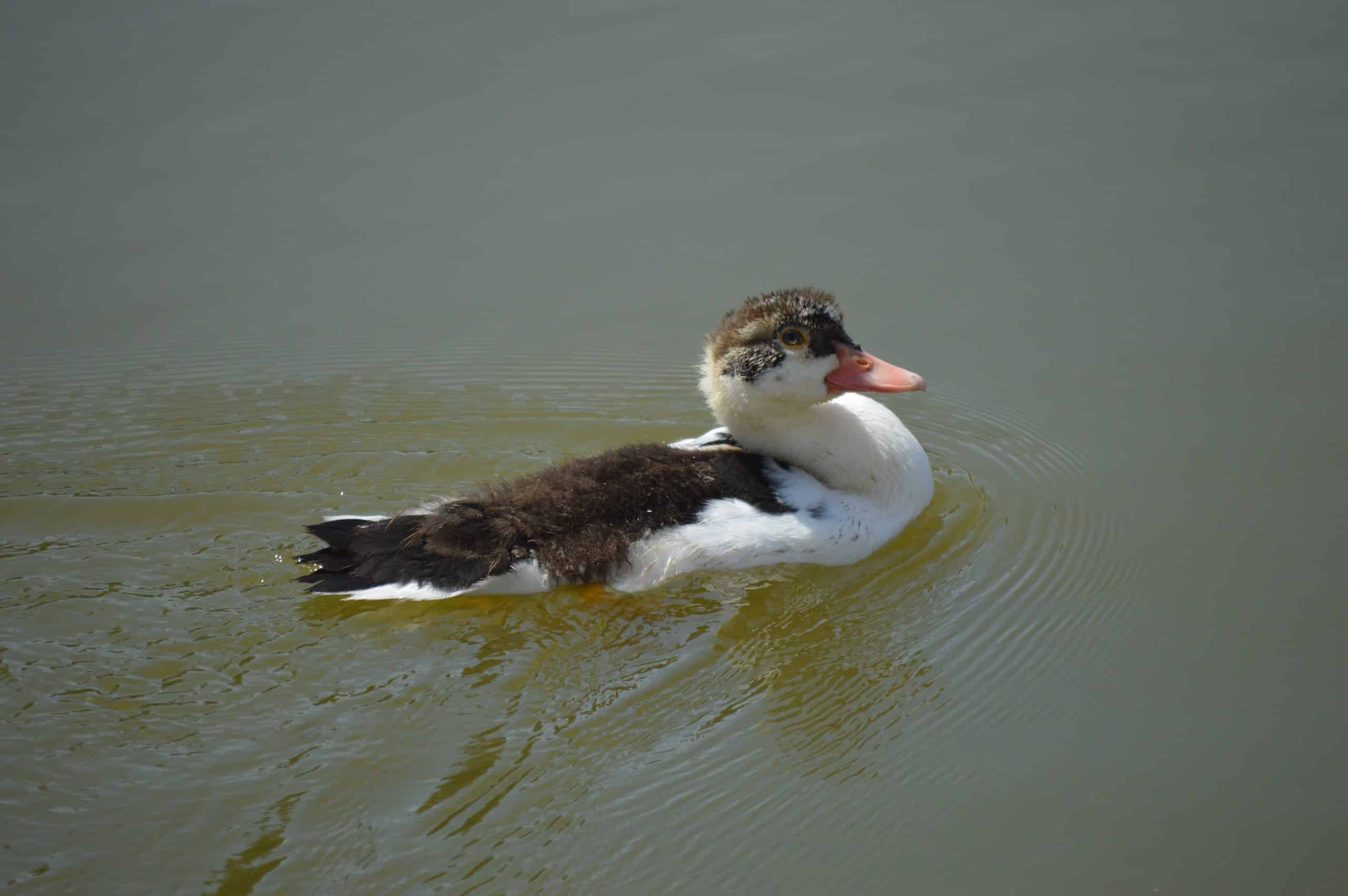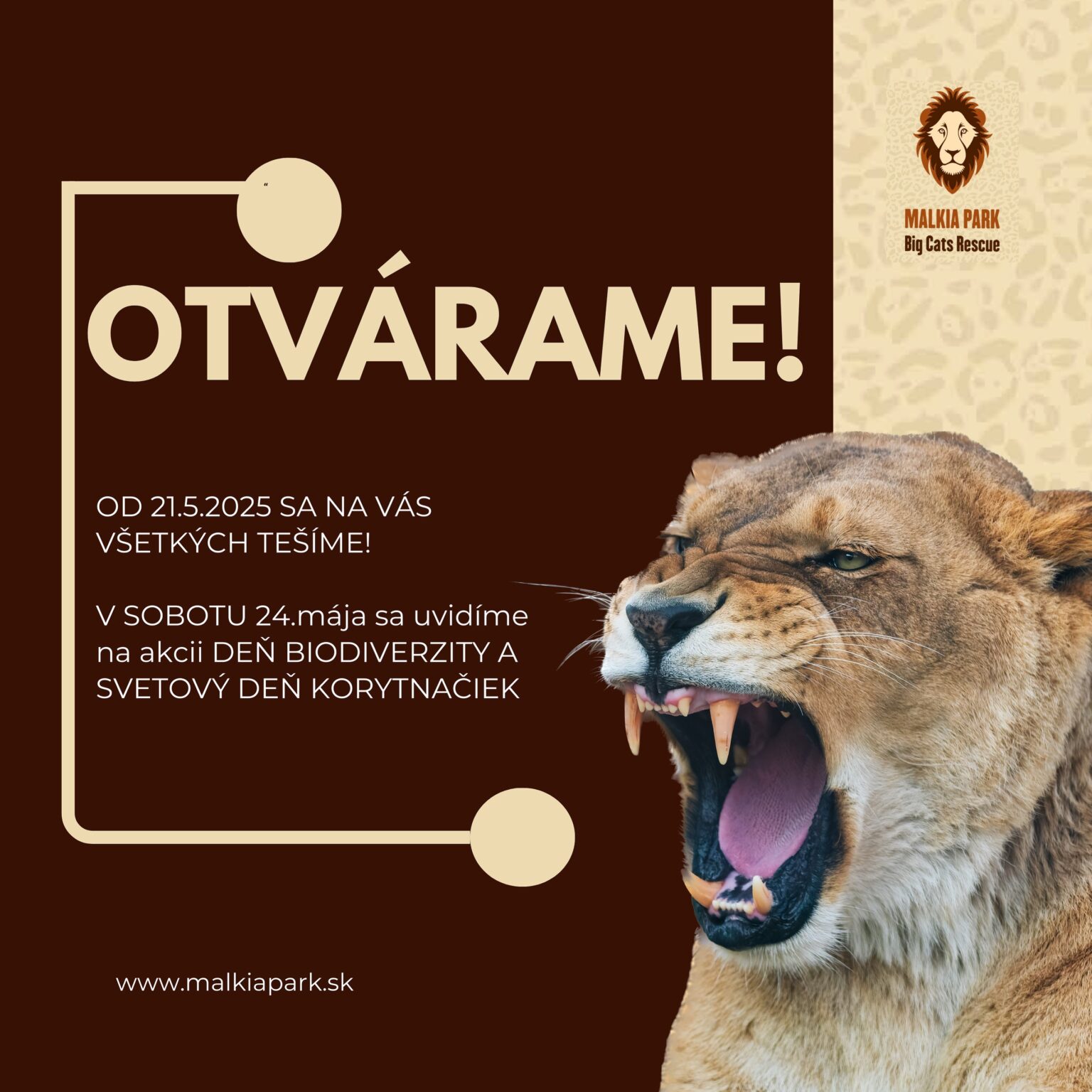The bird is predominantly black and white, with the back feathers of males being iridescent and glossy, while females are duller. The amount of white on the neck and head is variable, as is the beak, which can be yellow, pink, black, or any mixture of these colours. It may have white spots or streaks on its wings, which become more obvious during flight. Typically, both sexes have pink or red lobes around the nape of the neck, with the male’s being larger and more brightly coloured. Sexual dimorphism is mainly evident in size, as the female is about half the size of the male.
This non-migratory species commonly inhabits forested marshes, lakes, streams, and nearby pastures and agricultural crops, and often roosts in trees at night. Muscovy duck food consists of plant parts (such as roots, stems, leaves, and seeds of aquatic plants and grasses, as well as terrestrial plants including agricultural crops) obtained by grazing or “fishing” for small fish, amphibians, reptiles, crustaceans, insects, or millipedes in shallow water.
Males tend to be aggressive towards each other, often fighting over food, territory, and females. Females fight with each other less frequently.
This species does not form stable pairs. The breeding season is both on land and in the water.
The female takes care of the clutch herself, leaving the nest only for the necessary short period of time. The ducklings stay with their mother for 10-12 weeks, with the mother keeping them warm (especially at night) until their bodies can generate enough heat of their own. The drake often stays with the chicks for several weeks as well – guiding them as they search for food and providing protection.
Muscovy ducks were domesticated by various Native American cultures in the Americas when Columbus arrived in the Bahamas. A few were transported on Columbus’s ship, the Santa Maria, and then sailed back to Europe in the 16th century.
